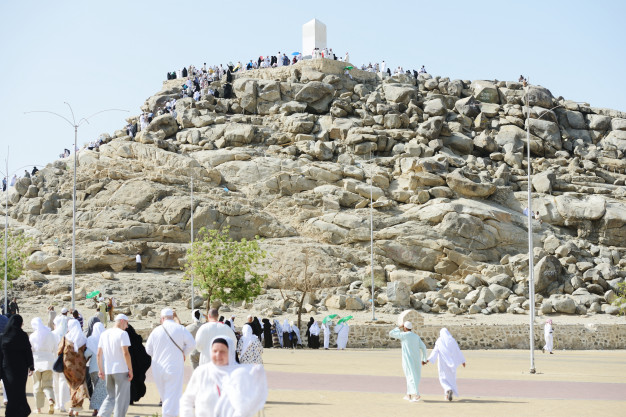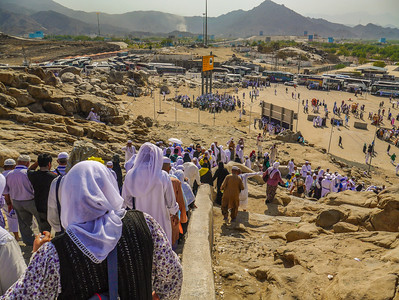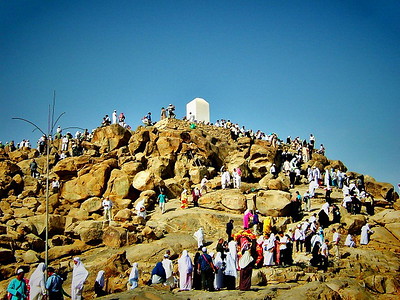Kapanlagi.com - Hajj is one of the religious rituals in Islam. Hajj is obligatory for physically and financially capable Muslims. Like other religious rituals, hajj has several pillars that must be performed, and one of them is wukuf. Wukuf is a pillar of hajj that cannot be skipped.
The wukuf pillar of hajj is performed on the 9th of Dzulhijah in the plain of Arafah. Generally, wukuf means staying in the plain of Arafah. During wukuf, Muslims performing the hajj pilgrimage are required to recite prayers.
As one of the pillars of hajj, it is essential for every Muslim to know what wukuf is and how it is performed. Therefore, to understand it better, let's take a look at the following explanation that has been summarized from various sources.
1. Understanding Wukuf

(credit: freepik)
Wukuf is one part of the series of worship in Hajj. In addition, wukuf is one of the pillars of Hajj that must be performed. In Arabic, wukuf means 'to stop'. Therefore, wukuf is interpreted as the cessation of activities of the Hajj pilgrims to stay in Arafah Plain. During the implementation of wukuf, all Hajj pilgrims will spend the night in that holy and historic place.
Wukuf is often referred to as the essence of Hajj worship. It is not surprising that wukuf becomes one of the emphasized pillars to be carried out. Without performing wukuf, Hajj can be invalid. In the implementation of wukuf, there are three important meanings, namely zawal, wukuf, and arafa.
Zawal means the transition from light to darkness, just like the movement of the sun. This is likened to the journey of humans towards their afterlife, which is dark but then becomes bright because in essence, true life is in the afterlife. Wukuf means the determination to eliminate evil in the heart, mind, and actions. Meanwhile, arafa means realizing that worldly life is actually only leading to eternal life in the hereafter.
2. Wukuf Implementation Time

(credit: freepik)
As mentioned earlier, the wukuf implementation is on the 9th of Dzulhijah. Wukuf is performed after the sun has set or shifted from midday (12 noon). The day of wukuf is also often referred to as Arafah Day.
Arafah Day is not an ordinary day. Arafah Day is so special because on that day Allah SWT and the angels witness His servants gathering in the field of Arafah. This is as stated by Prophet Muhammad SWA in the following hadith:
"There is no day on which Allah frees more people from hell than on the Day of Arafah. And indeed, Allah comes near and proudly presents them (His servants who are gathering in Arafah) to the angels. He says, 'What do these people desire?'" (Narrated by Muslim, number 1348, from Aisha).
3. Implementation of the Wukuf Worship

(credit: flickr)
The implementation of the wukuf worship is often referred to as a reflection of the event at Padang Mahsyar. Where both have similarities, both gather many people in one place. This means that the implementation of wukuf indirectly can also make hajj pilgrims remember death and the afterlife.
Wukuf in Padang Arafah is carried out since noon. Therefore, the wukuf worship begins with the implementation of Dhuhr and Asr prayers together or jamak taqdim. After that, there will be an imam who provides guidance on wukuf, as well as calls for worship and prayers that must be recited during wukuf.
In addition, as the main pillar that must be performed, wukuf also has a number of rules or procedures that must be followed, even before the hajj pilgrims arrive at Padang Arafah. The procedure for implementing wukuf is as follows.
1. Wukuf starts from the journey to Padang Arafah after sunrise on 9 Dhu al-Hijjah. During this journey, hajj pilgrims are advised to recite talbiyah, tahlil, and takbir.
2. Hajj pilgrims stop at Namirah or a hill outside the place of standing.
3. Hajj pilgrims enter the area of Arafah Field, precisely after sunset.
4. Hajj pilgrims must strengthen their hearts as best as possible, then recite talbiyah while waiting for the stages of the standing ritual.
5. Hajj pilgrims perform Dhuhr and Asr prayers combined in advance, performed in congregation.
6. Hajj pilgrims will listen to the sermon of Arafah. Generally, the sermon will be related to the meaning of standing, knowing Allah, the trust of the Prophet, and about the farewell sermon, and other religious aspects that guide hajj pilgrims towards the firmness of prayer and remembrance of Allah.
7. The final stage is to engage in remembrance, prayer, and recitation of the Qur'an.
4. Mistakes when Performing Wukuf

(credit: flickr)
In addition to the procedures or stages of worship mentioned above, there are also several mistakes that hajj pilgrims should avoid. Because these mistakes can reduce the values and practices of wukuf, and even make the wukuf invalid.
The prohibitions for hajj pilgrims when performing wukuf are as follows:
1. Performing wukuf outside the area of Padang Arafah.
2. Leaving Padang Arafah before sunset.
3. Spending time climbing Jabal Rahmah and writing inscriptions until not focusing on worship.
4. Being more occupied with walking and shopping.
5. Being occupied with taking pictures in Arafah.
6. Praying facing Jabal Rahmah and turning away from the qibla.
7. Sleeping and not maximizing prayers and remembrance of Allah.
Those are some of the reviews regarding wukuf as a pillar of hajj. Hopefully, it is beneficial and can increase knowledge, especially related to Islam.
(kpl/psp)
Disclaimer: This translation from Bahasa Indonesia to English has been generated by Artificial Intelligence.
















